Nakedness and Modesty
by Pastor Frank Senn
Advisory: Explicit pictures below
Pastor Frank Senn originally posted these responses to questions he received on his website Frank Answers. In my opinion, he offers some of the most balanced answers to real-life questions.
From His Site:
I’m not an expert on all aspects of the body (such as health issues or physiology) or on all questions about sex. But I do think I can answer questions on these topics from the perspective of the Bible and Christian tradition and even, to some extent, social history. That’s what I plan to do on this topic of nakedness and modesty.
Modesty, to me, is intentionally concealing or reducing what is seen by others, especially so-called “private parts” (for example, genitals). When Paul was comparing the church metaphorically as the body of Christ to the human body in 1 Corinthians 12, he extolled the value of all parts of the body, including the parts that we deem “less honorable” that are treated with “greater respect” (1 Cor. 12:23). The comparison he’s making is that the members of the body of Christ, the church, who are less honorable in social status should be “clothed with greater honor.”
The only passage that treats the issue of modesty in dress is 1 Timothy 2:9–10.
I desire, then, that in every place the men should pray, lifting up holy hands without anger or argument; 9 also that the women should dress themselves modestly and decently in suitable clothing, not with their hair braided, or with gold, pearls, or expensive clothes, 10 but with good works, as is proper for women who profess reverence for God.
Modesty in dress for Christian women is that they should not be ostentatious. They should be known more for their good works than for their attire, hairstyle, and jewelry. Other than this, there is no dress code for women or for men. What is modest depends on the cultural styles of the society in which one lives. The extent of modesty depends on social expectations and cultural expressions. So, for example, in our society it is considered immodest for women to display their naked breasts; in some other cultures, it is acceptable. In the cultures in which women bare their breasts, the breasts are not considered sex organs. They are glands for feeding babies. In the U.S. it is controversial for women to breastfeed babies in public. It is considered immodest.
There is no prescription against nakedness or nudity in the Bible, only when it is demeaned by lustful desires, such as King David gazing at Bathsheba when she was taking a bath of purification on her rooftop. This was a proper thing for her to be doing and he violated the sanctity of the ritual washing during her menstrual period.

Part of my witness in using nude images is that I believe there is nothing inherently sinful about the body. Our bodies are part of God’s good creation — all of our body. There’s nothing shameful about breasts and penises. I think it is important to dissociate nudity from pornography, which is an exploitation of the body engaged in what should be private sexual acts for public commercial consumption. Nor should nudity always be associated with sex, although sexuality is part of the body.
Body shame is pervasive in our society. Why that is the case is hard to get at. There are many reasons for this. Many of us were raised with teachings about modesty that were inculcated by religion and society. In America, we have lived with puritanical laws about “public indecency,” which includes even such natural practices as breastfeeding infants. In this article, I want to discuss what the Bible has to say about nakedness and modesty. How much nakedness is in Bible? Count in ways in Lucas Cranach the Elder’s painting, “The Allegory of Law and Gospel.” Cranach was the illustrator of Luther’s German Bible, godfather to Luther’s children, and sometime mayor (Burgomeister) of Wittenberg.
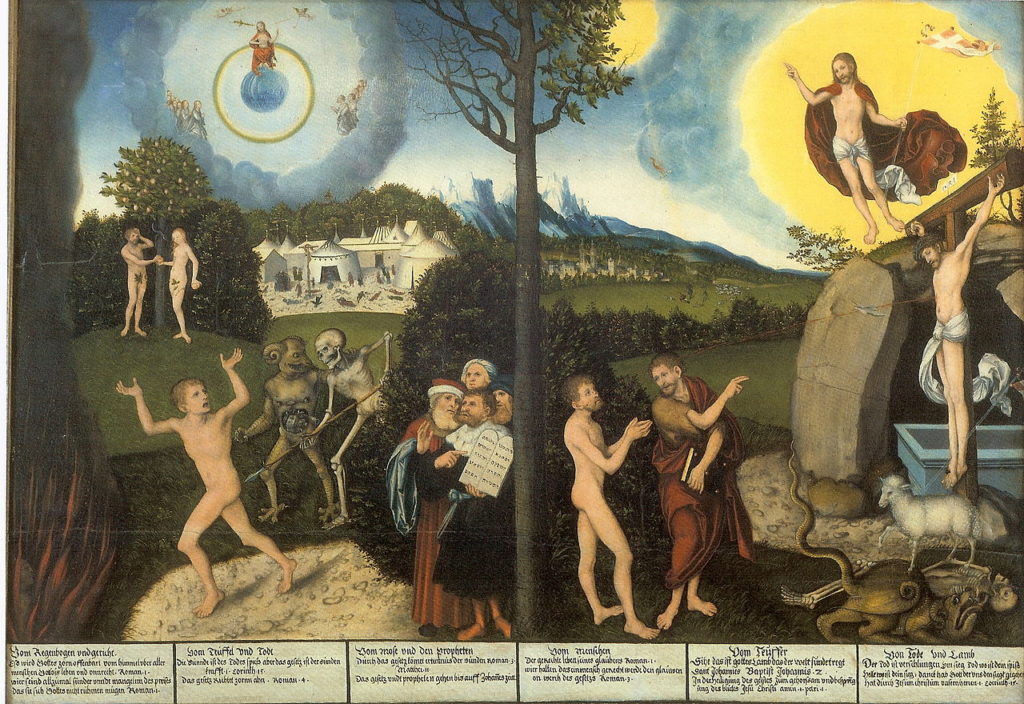
Many people in American society have difficulty accepting their bodily selves. Our consumer culture makes use of nudity and sexuality in advertising to sell products. This includes the projection of the ideal bodies of models that few of us can replicate in our own bodies. Our attitudes toward our bodies are very much influenced by the consumer culture in which we live and move and have our being. What is the ideal body type for a model who walks down the catwalk? Wisp-thin waifs or bootylicious Brazilians?

In the Beginning
Christian discussion of nakedness and modesty has to go back to the story of creation and fall in Genesis 2-3 (the so-called Jahwist or J-narrative). This narrative begins with the affirmation of nakedness and ends with the Lord God clothing the naked bodies of Adam and Eve. This has been taken by Jewish and Christian teachers as an endorsement of the need for modesty in a fallen world. The Genesis narrative says that in the beginning the man and the woman were naked and unashamed.

The point is that they ate and the first result of disobeying God’s command is that “the eyes of both of them were opened, and they knew that they were naked; and they sewed fig leaves together and made loincloths for themselves.” Eating the forbidden fruit made them aware of things they had not been aware of before. In a sense by making loin cloths (actually aprons) to specifically cover their genitals, they were intentionally hiding their most intimate parts from each other and from God. This was not because they suddenly discovered modesty. It was because their relationship with God and with each other was impaired by their knowing act of disobeying God. Intimate relationships had been damaged and so they covered their intimate parts by which, as the Bible says, we “know” others.
Secondly, they hid from the Lord when they heard the sound of him walking in the garden. When the Lord called them out from hiding, Adam’s excuse was “I was afraid, because I was naked, and I hid myself.” God knew immediately they had eaten of the tree, because otherwise how would they have known they were naked? The word translated “naked” here actually means “exposed.” The Lord questions Adam, “Who told you that you were naked? Have you eaten from the tree of which I commanded you not to eat?” With that, the blaming game began: Adam blamed Eve for giving him the fruit and Eve blamed the serpent for causing her to disbelieve God’s word.
Each character received punishment. The snake goes on its belly and the couple was expelled from the garden, lest they take also from the tree of life and live forever. But in an act of grace, “the Lord God made garments of skin for the man and his wife, and clothed them.” The text gives no reason for the Lord God to make clothing. A logical guess would be for protection from the elements, which perhaps had not been an issue in the paradise garden. But nothing is said about the need for modesty or that human nakedness is sinful.

My Personal Experiences of Nakedness
Nakedness is not inherently sinful. We are born naked. Children in many societies in warmer climes may often be in a state of undress up to a certain age. Little children delight to run naked in the house when getting ready for a bath. Up to what age this is allowed depends on the family and the social context and cultural setting. Usually by the time puberty sets in children are expected to be dressed when they interact with the family or others in the house because the developing sexuality of the body needs to be covered.
I spent many hours showering and swimming naked with other boys in high school freshman PE Swimming Class. I had a wonderful experience of swimming naked on a Scout camping trip in the summer of my fifteenth year (1958) with three other Scouts. Hiking up the South Branch Cattaraugus Creek we discovered a swimming hole to which we returned each day. We spent our days for the rest of the week being naked by our swimming hole and further exploring the creek.

The last time I swam naked with a friend was when I was visiting Mike Fisher near Roanoke, Virginia in the summer of 1963. We were both twenty at the time. On a summer evening, we were walking along the Shenandoah River and he suggested that we swim in the river. With a quick look around to see who else might be nearby, we got undressed and stepped into the river. It’s what boys did in secluded areas. It was called “skinny dipping.”
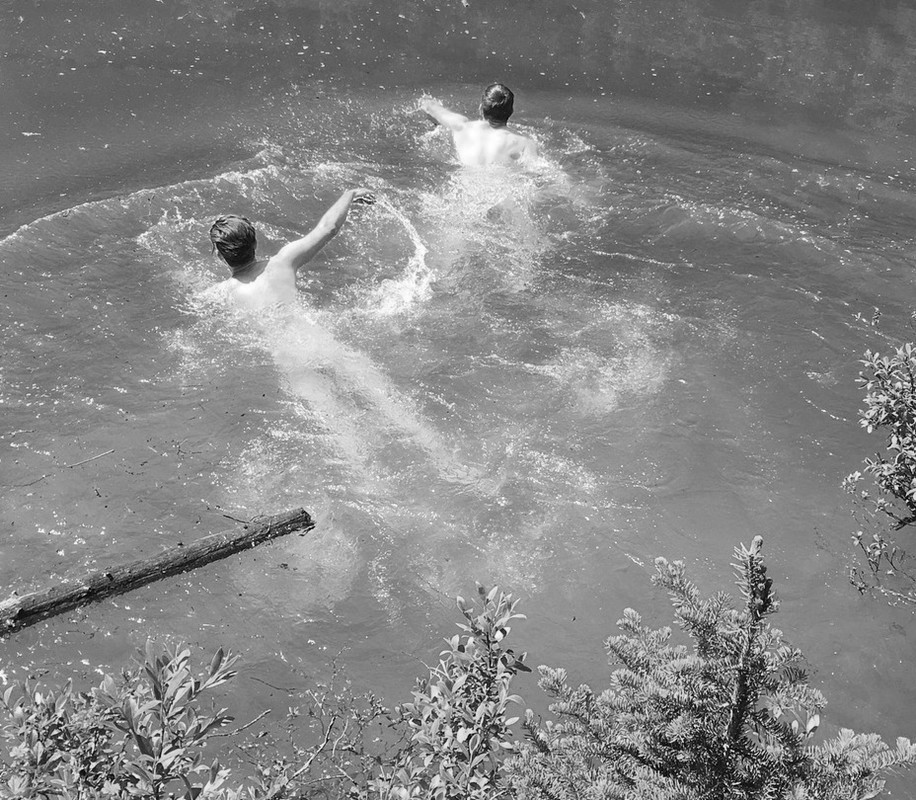
The nude male body in natural surroundings has not been as prevalent in art as the nude female body. It’s a Romantic concept and one of the best examples is the late Classical/early Romantic work of Anne-Louis Girodet de Roucy-Trioson, The Sleep of Endymion (1791). The male body portrayed by Girodet has feminine as well as masculine qualities.
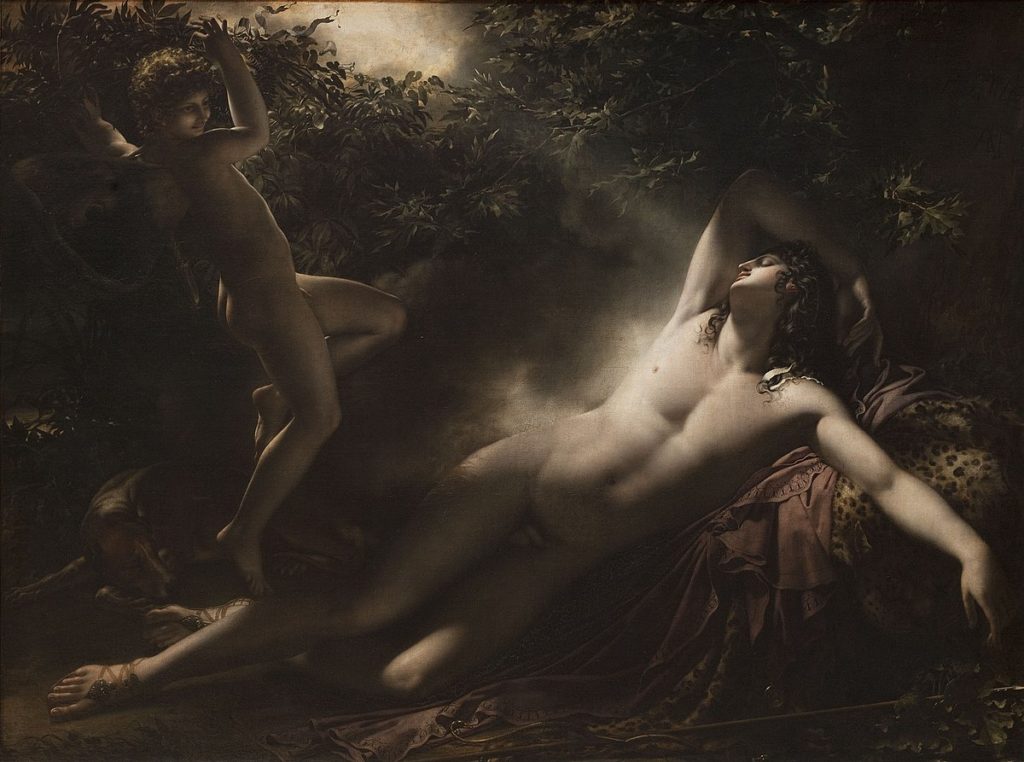
Off to college in 1961. Dorm life involved a lot of nakedness. You pretty quickly got used to undressing with your roommate in the room. As you got used to your roommate and dorm mates who might wander in uninvited, you felt comfortable just hanging out in your all together. I lived with the same roommate for three years in college and two years in seminary. We certainly got used to being naked with each other sharing one room.
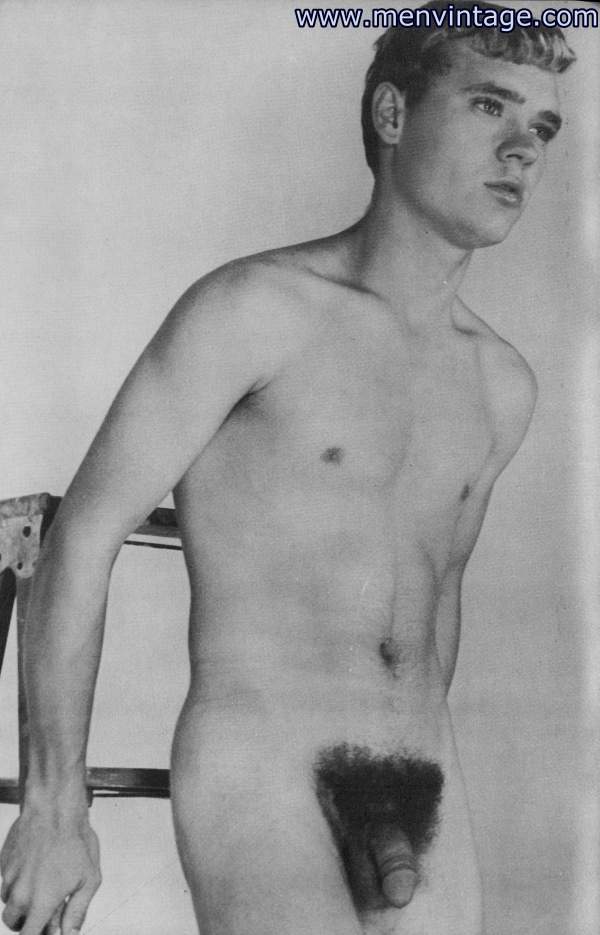
In our dormitory, there was an open shower on each floor and a row of sinks in the bathroom where we shaved and groomed ourselves. We young men walked around the hallways and bathroom areas with a towel wrapped around our waists (sometimes). I think most of us took in stride being naked in our communal living, even when our German dorm mother was on the floor. She seemed to take our nakedness in stride also.

For several reasons, naked communal showering came to an end by the 1980s. In suburban homes with several bathrooms, boys and girls became more used to privacy once they reached puberty. They stopped showering after gym classes and learned to dress and undress without completely exposing their bodies. (Men call it the “towel dance”).
Homophobia became an issue. Boys became afraid of being hit on by gay boys and gay boys became afraid of being exposed as gay by their erections (as if all boys don’t get them!). Colleges followed the trend by providing individual shower stalls for the sake of modesty. Dorm suites began to replace individual rooms. It has become possible for roommates to never see each other naked. I think a lot was lost in terms of male camaraderie with the loss of social nakedness. Was the experience of being naked with one another homoerotic? Yes, but eros is about more than sex. It is really about passionate love in all its forms. Can boys love other boys and their own bodies without being perceived as gay or worrying about that themselves? Boys, and girls, too, are interested in their developing bodies.

Revival of Public Nudity in the Age of Aquarius
The decade of the 1960s marked the beginning of the sexual revolution. The magazine most associated with this movement in America was Playboy, founded by Hugh Hefner in 1960. It projected a seemingly free sexual lifestyle of scantily clad “bunnies” running around Hugh Hefner’s mansion while he worked in his silk bathrobe. American boys (and men) sneaked copies of Playboy home and stashed them in their closets where their Moms (or wives) wouldn’t find them (but usually did). While college students said they bought it for its literate articles, the nude centerfolds were a great marketing ploy.

In 1973 Playgirl magazine debuted under the editorship of Marin Scott Milan. It was billed as “a sex-positive, fun-oriented feminist response to Hugh Hefner’s empire.” It featured hunks on the cover and throughout and a full frontal nude centerfold photo. Its content was a bit more sex-oriented than Playboy.

The Hippie culture embraced nudity as a way of raising questions about American attitudes toward the body left over from Victorian-Era puritanism. The Rock Musical Hair became the manifesto of the Hippie culture. It was revolutionary in its featuring of on-stage nudity. The play was first presented in off-Broadway theaters in New York in 1967 and went on Broadway in April 1968.

While nudity was confined to the stage in Hair, the Hippies provided provocative examples of public nudity at the mass gathering in Woodstock, NY for the Music Festival held August 15–18, 1969 on Max Yasgur’s dairy farm. As thousands of young people camped out on the farm property they availed themselves of the lake for bathing.
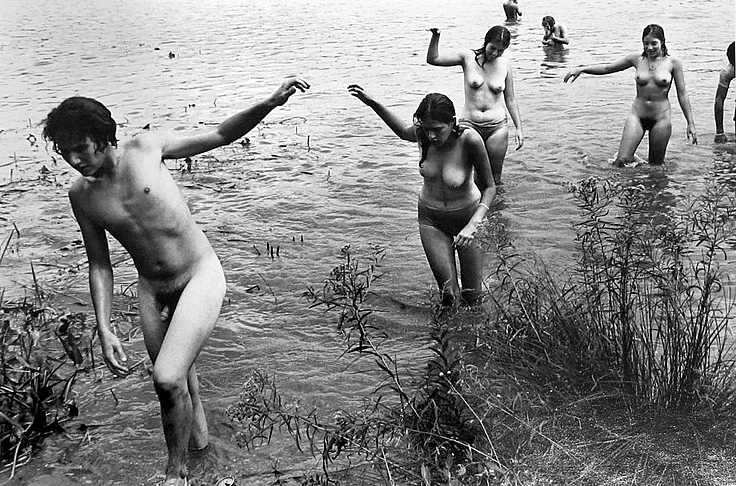
Hippie camps and gatherings were clothing optional. They used nudity as a form of protest against prevalent attitudes about decency and pressed the question, “Why is nudity considered obscene?” They portrayed it as a natural state and disconnected it from sex (although not excluding sex).
In contrast to Playboy magazine, the hippies modeled a new aesthetic of the raw beauty of the naked human body. The consumer culture began to tap into this new aesthetic in the early 1970s. Soon models in more main steam publications were photographed wearing less makeup and were often pictured in naturalistic surroundings.

Examples of Nakedness In Europe
In the summer of 1968, I traveled to Europe for the first time. I went back again several times in the early 1970s. I learned that Europeans were more open to public nudity than Americans. The Germans especially felt it was healthy to be naked in nature. This idea emerged in the late nineteenth century in the Freikörperkultur (free body culture) as a response to life in an urban-industrial society, although it was suppressed during the Nazi Era because it was seen as espousing Marxist ideas and promoting homosexuality. After World War II Germans, especially in East Germany, undressed for sunbathing in public parks and on clothing-optional beaches, perhaps as a way of expressing a sense of freedom in a dictatorial Communist society.

In Finland, Sweden, Russia, and Estonia family saunas are popular in which families or groups of friends gather for health, spirituality, business, and camaraderie. Family and guests alike are naked in the sauna, although they may sit on towels.

The people who sit in the sauna to allow the heat to bring toxins out of their bodies will eventually run out and jump in a cold lake or pond, like this Estonian family emerging from their country sauna.

New York Times Magazine
June 28, 2018
The Naturist Movement
The naturist movement began in Europe in the early twentieth century and gained momentum again after World War II beginning in the 1970s. It is committed to living in harmony with nature and practicing non-sexual social nudity and has different organizations in different countries. In Europe and North America, naturist clubs provide outdoor nudist camping experiences for whole families. Surprisingly, many Christians participate in the naturist movement.
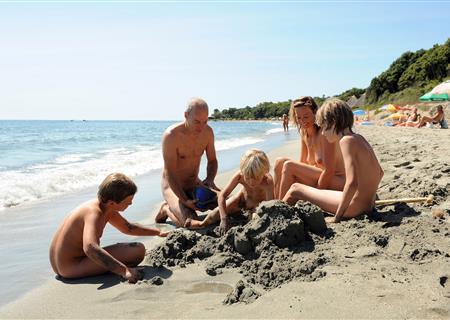
A new self-published book by Baptist teacher Aaron Frost comments on all the passages in the Bible that deal with nakedness and modesty and gives examples of nudity and clothing in various cultures. He concludes that Christians today are actually more beholding to Victorian Era social mores and contemporary cultural expectations than to what the Bible actually says about being naked. I recommend it to those Christians who have difficulty with nudity, although I find his predictions about increasing nakedness in American society overly optimistic. Nor do I endorse his enthusiasm for naked group worship. Frost does correctly point out that many Christians have been at the forefront of the naturist movement.

Nakedness in the Bible
From the Christian point of view, there’s nothing sinful about being naked. As we saw, according to the Book of Genesis, Adam and Eve were “naked and unafraid” before their situation changed with the forbidden fruit incident. Wearing clothing was a concession to their fallen state and expulsion from the garden. No reason was given for the Lord making clothing for the man and the woman. I think the gift of clothing can be seen as protection in the hard world outside of paradise they were entering. But If the gift of clothing was the basis of the need for modesty in human society, as some have argued, then modesty must be regarded as a concession to human sin. We need protection from one another. But that doesn’t make nakedness wrong. This distinction has eluded many Christians.
The Bible makes many matter-of-fact references to nakedness (which can even be a spiritual state) but actually says very little about modesty in our modern understanding of covering the body, especially the “private parts.” The only detailed specifications of clothing in the Bible concern the high priest’s vestments, even down to the details of his underwear, when he serves before the presence of the Lord in the Tabernacle and Temple. As usual, the Torah gives no explanation for this. It has been proposed that the high priest could not allow his manhood to show before Israel’s alpha male, Yahweh.
Our current American understandings of modesty and attitudes toward nudity are not the Bible’s understandings and attitudes. They are a product of our own puritan culture, especially as modesty was exaggerated in the Victorian Era during the second half of the 19th century. Nakedness was a fact of life in the biblical world. Fishermen hauling in their nets, farmers hoeing their fields, hunters tracking prey, athletes competing in the games, and men and women in the public baths were all naked (as is evident in ancient drawings and mosaics). John 21 describes the disciples going fishing in Galilee after the resurrection of Jesus. When the risen Lord appeared on the beach with a hot breakfast and the beloved disciple recognized him, Simon Peter “put on some clothes, for he was naked, and jumped into the sea.”
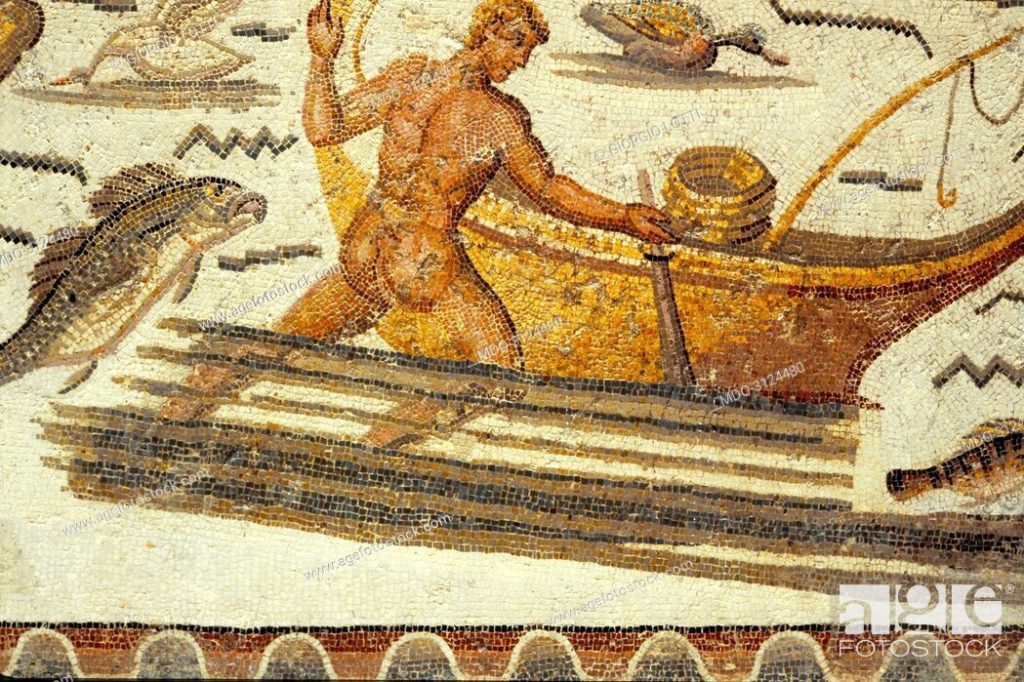
Early Christian mosaics portray Jesus naked when being baptized by John the Baptist in the River Jordan. This probably reflected the fact, attested in texts from the church fathers, that Christian baptism was performed on naked bodies, both male and female.

Vietnamese theologian Dan Le published his dissertation on The Naked Christ: An Atonement Model for a Body Obsessed Culture (Eugene, OR: Pickwick, 2012), in which he proposes the totally naked (no loin cloth) crucified Christ as a redemptive answer to a culture of fitness obsession and body shame. By his atoning sacrifice, Jesus has absorbed all our sins. He has also absorbed all of our shame. He was stripped and exposed, so that even until the end his atoning sacrifice would be seen as victorious over our sin and shame as well as, in his resurrection, victory over death. Artist Max Klinger was one of the first to paint the crucified Christ and the other two victims naked because that was the Roman practice.
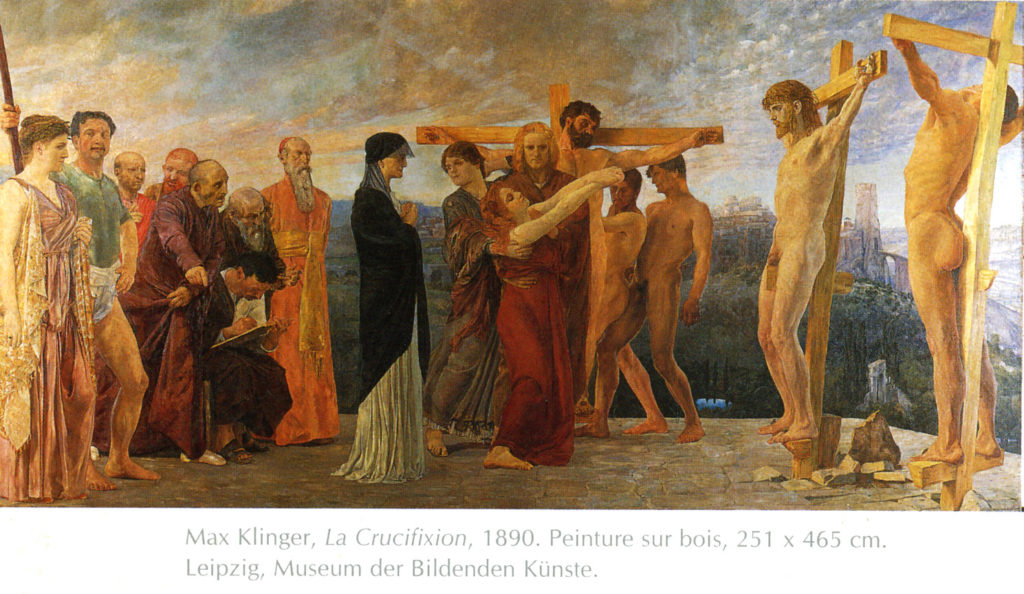
The Bible makes no pronouncement about how much coverage the body should have. But it gives plenty of examples of ordinary and intentional nakedness (such as David’s dance before the Ark, Isaiah’s nakedness as a form of proclamation, and acts of penitence). Christ himself accomplished his most important acts of salvation for us in a state of nakedness, but artists have not usually been at liberty to show it except for the naked Christ child (although there have been exceptions; Michelangelo sculpted a nude Christ on a crucifix and as the naked risen Lord dropping the grave clothes). Leo Steinberg, The Sexuality of Christ in Renaissance Art and in Modern Oblivion, second edition (Chicago: University of Chicago Press, 1983, 1996) demonstrates with many images the portrayal of Christ in the fullness of his manhood by Renaissance artists, often with the barest minimum of modesty.

Naked/Clothed
Naked/enclothed was a prominent part of what Christ did “for us and for our salvation.” He was born as a naked infant and wrapped in swaddling clothes. He was stripped naked to “suffer under Pontius Pilate” in his flogging and then clothed in a purple robe with a crown of thorns on his head. He was stripped again to be crucified. Romans didn’t allow loin cloths for their victims; this was an act of public humiliation. He died, was taken down from the cross, wrapped in burial linens, and laid in a borrowed tomb. On the third day, he rose from the dead, and Peter and John found the burial linens laid aside. We have no idea what he wore when he left the tomb if anything.
Christ’s own body shows the contradictory aspects of nakedness in the contrast between the degradation of his body in his flogging and crucifixion and his glorified body in the resurrection (which still bore the marks of the nails and the spear). Likewise, the ancient Greeks glorified the male body yet Achilles dragged the naked dead body of Hector through the Greek camp at Troy as an act of degradation. The Roman nobility proudly displayed their naked bodies in the baths, yet humiliated the bodies of slaves by stripping them naked on the auction block.

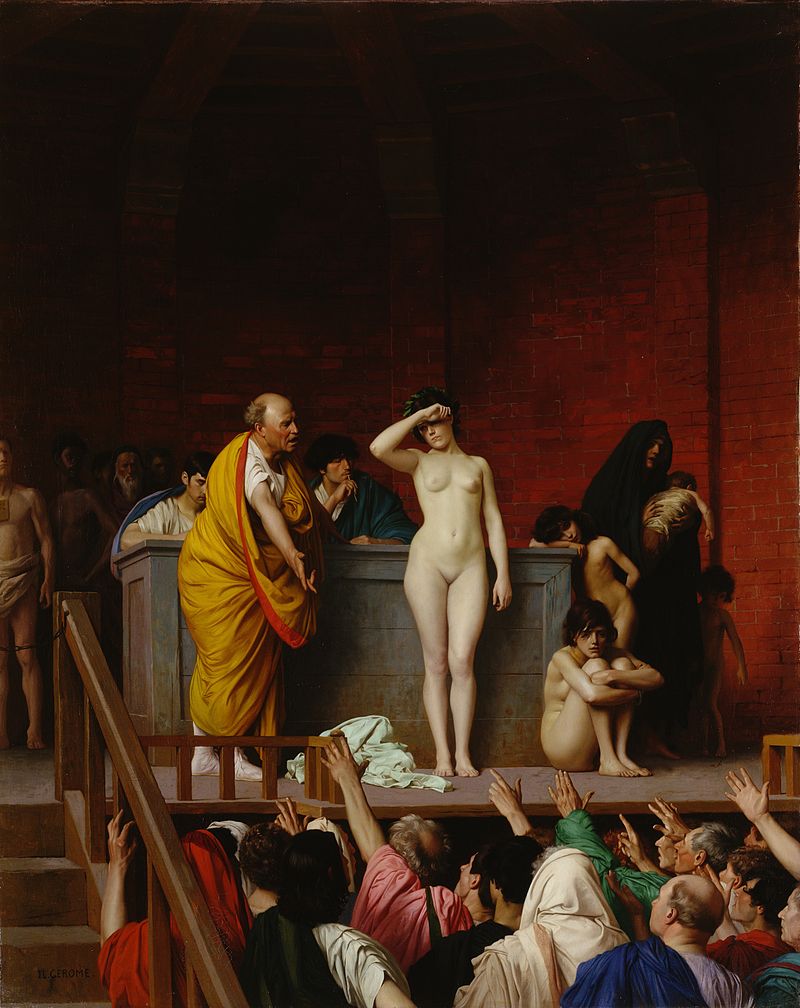
Those who were baptized into Christ’s death and resurrection were stripped naked for a full body anointing and immersion in a pool of water, not unlike the rituals of the Roman bath. Their nakedness suggested not only the identification with the crucified Savior but a return to the innocence of the paradise garden (Cyril of Jerusalem). When they emerged from the font they were clothed in a white robe. The dialectic of naked/enclothed is prominent in rites of initiation in many traditional societies and in religions.

Mark Johnson, The Meaning of the Body (Chicago: University of Chicago Press, 2007), discusses the body as simultaneously biological, environmental, phenomenological, social, and cultural. In terms of the body being naked or enclothed: our natural state is nakedness, but our nakedness is covered against the elements for protection since humans lack fur. We experience the sensations of being both naked and clothed. The degree to which we are naked or clothed depends on social regulations and cultural expectations. There are defined areas in which we can be naked and areas in which we must be clothed.

Our contemporary American problem with social nudity is that it is strictly confined in our society to places like gym locker rooms and clothing-optional beaches. Apart from being naked in our households, we don’t usually experience nakedness except in films and advertisements. We associate nudity with sex. In our experience and expectation, getting naked is what people do when they’re getting undressed in the expectation of having sex. Helping your partner get undressed in order to reveal by removal of items that are under the clothing is a very erotic activity and usually a part of foreplay.

The Consumer Body
We are an enclothed society. Modesty is good for business because clothing is one of our biggest consumer items. The clothes we buy and wear are called “fashion statements.” We’re careful about what we put on our bodies because our clothing choices are part of our self-identity and the identity we want to project in society. “Clothing makes the man,” says one classic advertisement.
Ironically, while clothing provides the modesty we think we need in a fallen world, covering especially our “private” body parts, advertisers get us to buy clothing by modeling it in a way that draws attention precisely to those “forbidden” body parts. Over the years the forbidden body parts have changed as more and more have been revealed. First, it was the calf or shoulder. Then the skirts got shorter and the belt lines came down. Soon the navel was exposed. Now, in fashionable women’s evening gowns, much of the breast can be shown as long as the nipple is covered.

Now men wear low-hanging, tight-fitting jeans that call attention to the crotch. In our clothing, we are becoming nuder. But we are not yet naked. That could be because nude is sexy; naked is not.

Part of our obsession with our bodies is that we want to be confident that our naked form will be as appealing in our clothed state. Our clothing selection is seldom our own choice. Clothing designers decide what styles will appeal to people and push those. Usually, they are styles that appeal to younger men and women. The younger set are attracted now to tight-fitting clothing rather than the baggy look. But to look attractive in those tight pants and shirts and jackets you have to have a thin and trim body, otherwise, you’re bulging at the seams. This sends people to gyms and onto running paths to tone up. Fitness for the young is really about fitting into those tight clothes, which in turn reveal the fine form of the body under them.

Nude versus Naked
Why is the nude more sexy than the naked? Art critic John Berger once said, “To be naked is to be oneself. To be nude is to be seen by others and yet not recognized for oneself.” Science writer Dorion Sagan wrote in his little book, Sex (White River Junction, VT: Chelsee Green, 2009), “Nakedness is pretty straightforward. It is exposure. What you see is what you get. The allure of nudity is subtler. What is still concealed is equal to or greater than what is revealed. What you see is not what you get. Partial revelation triggers temptation, seduction, the dance of desire” (p. 7). Nakedness is our natural state. We were born naked. When our nakedness is covered, the eye wants to see what’s under the covering, especially in those areas considered to be forbidden to display in public, such as breasts and genitalia.
A way of distinguishing between the concepts of “naked” and “nude” is the practice of providing a live body in an art class for the art students to draw according to their perspective, often from different vantage points. They are drawing a three-dimensional naked body but on paper, it becomes a nude because the entire body cannot be seen. There is more to be revealed that the artist does not show.

Here is a live naked model being transformed into a nude on canvas.

Appreciating the Nude
Renaissance artists especially appreciated that the human anatomy is an important way to understand the shape of the human body. Even for artists to depict a clothed figure one needs to visualize the anatomy of what is underneath.
Artists have appreciated nude figures as a way of transcending their historical context. Clothing is always an expression of a particular culture. Portraits probably should represent the subject in his or her historical, social, and cultural context. But nude figures lack these cultural particularities and are therefore universal. They serve well to symbolize eternal ideals and aspirations. i
The most basic reason artists prefer to paint or sculpt nude bodies is that the human form is beautiful to look at and varied in its shapes. Our bodies are full of curves, cones, cylinders, spheres, and other shapes, which can be drawn on paper or shaped in clay or stone. Artists play with skin tone colors, light and shadows, expressions of emotion, anatomical realism, or abstract impressions. All the meanings of the body are incorporated into the artistic nude body. Through art we come to appreciate the body — all bodies — as they are, imperfections and all, in relation to their environment, within their society, and against their cultural background. Here are two famous nudes from the early Romantic Era.


Christian artists in the Renaissance explored the naked body as no artists had done since the time of ancient Greece. They were interested in the anatomical body, the body’s proportions, as well as its social position. Michelangelo festooned the walls and ceilings of the Sistine Chapel with nude bodies. He fashioned sculptures of the naked bodies of David and the risen Christ. When it came to Christ, except as an infant, some discreet veiling of the genitals was required. But the 19-year-old Michelangelo also presented a monastery with a crucifix that featured the naked body of Christ on the cross. Lucas Cranach the Elder of Wittenberg, friend, and supporter of Martin Luther, who painted famous portraits of the reformers, and provided illustrations for Luther’s German Bible, also painted the naked bodies of the ladies of the Saxon court, including portraying them as nude mythological figures.

In fact, Renaissance artists found that it was easier to paint nude bodies representing pagan or classical themes than Biblical persons, in terms of avoiding church censorship. Even Adam and Eve had to be covered with a fig leaf (although Michelangelo painted a totally nude Adam on the ceiling of the Sistine Chapel). The classical subjects also appealed to the Renaissance interest in the revival of classical culture.
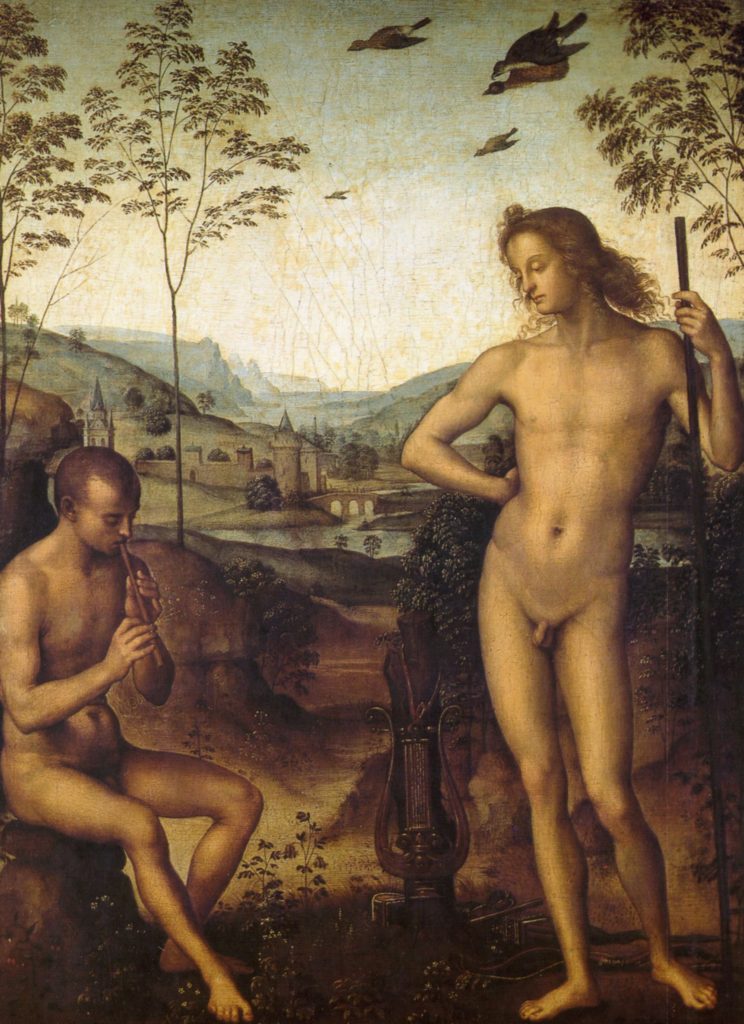
The contemporary Italian gay artist, Vittorio Carvelli has tried to convey homoeroticism in Italian Renaissance art in his canvas paintings and photography as he evokes the sensuality of ancient Greek and Roman life, as in this torso study.

And since I brought up photographs as art, we should recognize that with the iPhone’s camera feature (and maybe the help of a mirror), millions of people around the world are taking and sending nude selfies ranging from below-the-belt-line sexting to attempts at more artistic posing. In spite of the fact that nude selfies stored on iCloud or other caches get hacked and nude selfies get posted online, people take the risk. They want to be naked. They’re limited in the number of public places where nudity can be practiced, but in the private venues of their bathroom, bedroom, or living room they take photos of themselves in a state of undress that is sometimes shared with “friends.”

Historically the nude form in art suggested power in men (like Vasquez’s “Male Nude” up above ) and sexuality in women (like Goya’s “La Maja Desnuda” up above). Nude self-photographs attempt to imbue the subject (themselves) with both. Hence male nude selfies tend to display erections, as do self-photographed portraits like the following.
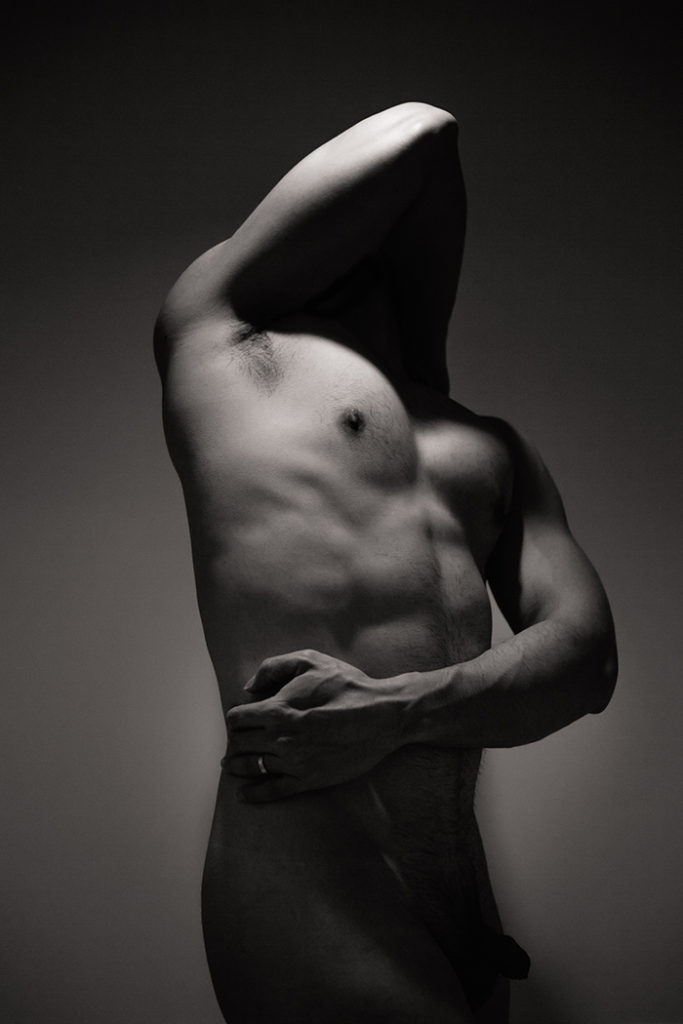
Male portraits of nude women (like Goya’s) place women on a bed in a pose suggesting availability. This self-photograph by a woman conveys a lack of availability. She seems wrapped up in her own “issues,” as we say.

The value of contemplating a nude body is that for a variety of complex social and cultural reasons our relationship to our own bodies and the bodies of others have been distorted. Nudity in art serves as a sort of mirror forcing us to confront the way society has confounded our relationship to our body and the bodies of others. The nude reminds us that the human body can be both beautiful and grotesque, innocent and sexualized, free and controlled, and it forces us to consider our own views of the body and how it is regarded in our society.
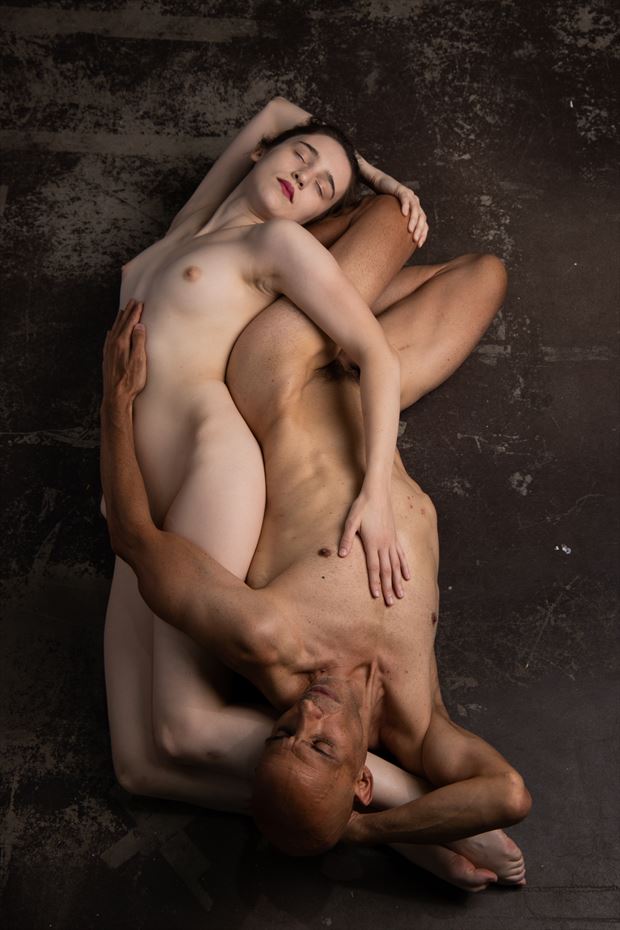
So What About Modesty?
Modesty is covering the body that God pronounced as “very good.” Objectively considered, from a Biblical perspective we have nothing to be ashamed of. If we have transgressed the limits and have something to hide, we express that (as Adam and Eve did) by covering up. Ironically, therefore, clothing is more an expression of our shame than nakedness is. The required coverage is a consequence of the fall into sin.
It is noteworthy that in some parts of the world, especially among indigenous people, there is less body shame than in Western societies, such as among these San Bushmen in Namibia who are naked by choice in the modern world. Comparing the modern world with traditional societies shows that what is covered or left uncovered varies among societies. Shame associated with nakedness is obviously not a factor in societies that practice almost complete nakedness, just as in our society the amount of coverage varies with age, sex, climate location, and other factors.

I don’t expect that our modern societies will change from being enclothed to being naked. For those who don’t live in the tropics, the climate is not conducive to it. The changes in Western fashion down through the ages have shown the body more covered or less covered.
I reported above experiences of social nakedness that I enjoyed as a youth. These occasions for naked fun obviously diminished as I grew older and had family and professional responsibilities. Some opportunities to experience the naked state anew are available in such venues as the Korean Spa near my home.

There are more clothing-optional beaches throughout the world that attract tourists. The Mediterranean and Baltic coasts are generally clothing optional and whole families will enjoy being naked together.
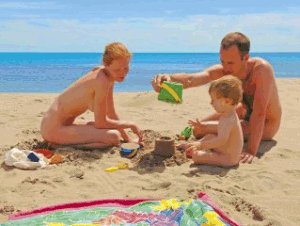
There are events like the World Naked Hike Day, on the summer solstice, a naked swim for charity in Sydney, Australia, and the World Naked Bike Day in cities throughout the world to protest global warming and call attention to environmental concerns. Americans may not be aware that it is not illegal to hike naked in our national parks and forests.

Down on the coast on Cobbler’s Beach in Sydney swimmers assemble for the annual Sydney Skinny Unique. The swim raises money for the Cure Brain Cancer Foundation, established by internationally renowned neurosurgeon Charlie Teo, who also swims in the event which attracts hundreds of people from Australia, New Zealand, and the United Kingdom.
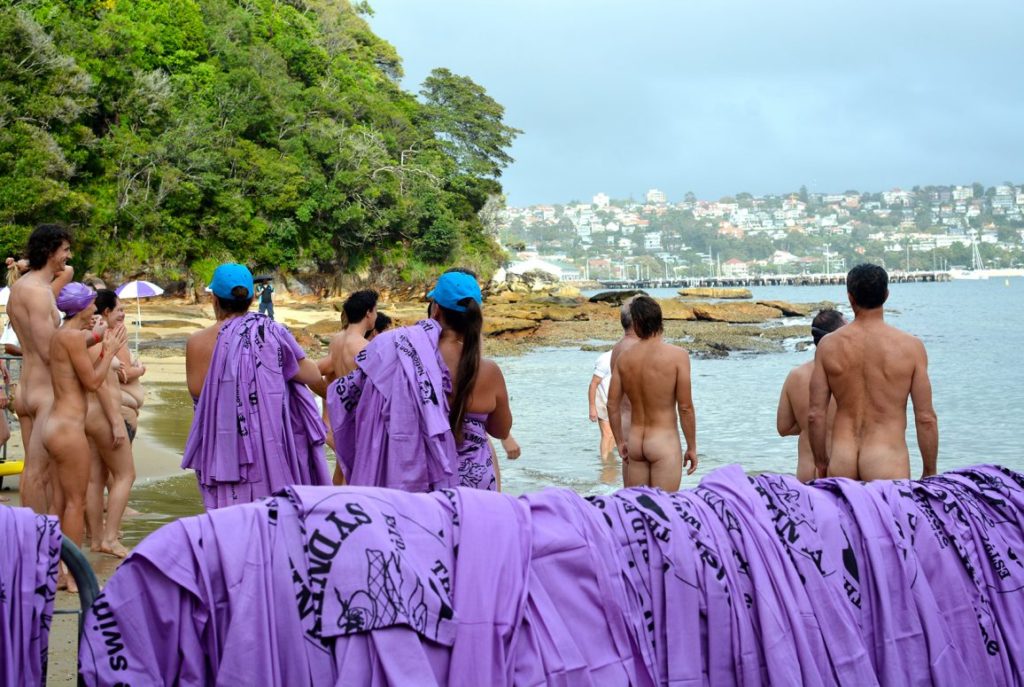
One event hosted in many cities around the world in which both women and men can be naked in public is the annual naked bike ride, which is a demonstration against too many automobiles burning fossil fuel and contributing to environmental pollution. Both men and women are given permission to bare all for the cause and enjoy the freedom of riding through town naked. In this event nature in the form of the natural body is brought back into urban life.
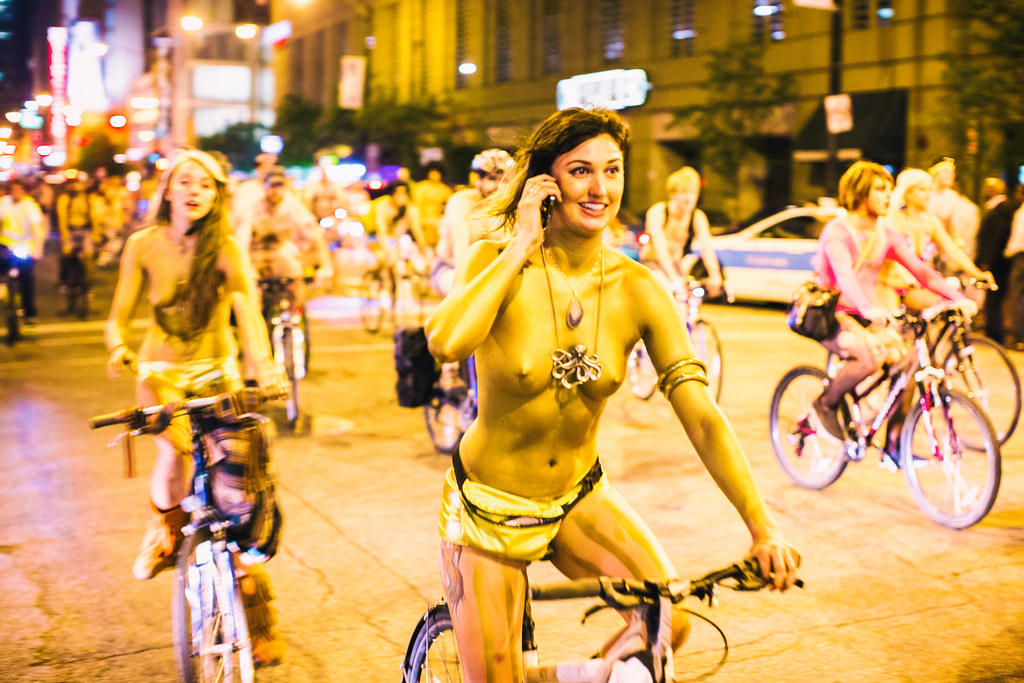
I believe that a sacrality accrues to nakedness simply because it is the body’s natural state as God created it and pronounced it good. I don’t think we all need to be naturists, and I doubt that the modern world will return to ancient practices of nudity. But it would be well if more people of all ages experienced the goodness of the body’s naked state and came to appreciate their body in its relationship to the natural world, of which it is a part.
Pastor Frank Senn


